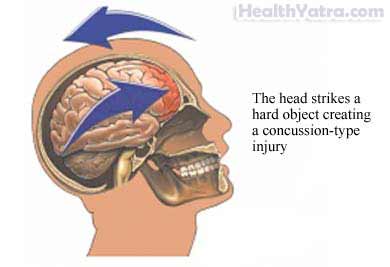সংজ্ঞা
A hematoma is a collection of blood. A subdural hematoma develops in the space between the brain and the skull. This pool of blood can put pressure on the brain and cause a range of symptoms.
This can be serious and life-threatening injury. You will need to seek medical care.
কারণসমূহ
A subdural hematoma is most often caused by a head injury. The injury may be caused by traumas such as falls, car accidents, or physical abuse.

ঝুঁকির কারণ
Factors that increase your risk of a subdural hematoma include:
- Being of advanced age (due to greater risk of falls and weaker blood vessels)
- Playing high-impact sports
- Taking blood thinning medication
- Having atrial fibrillation
- Having a history of heart attack
- Abusing alcohol or drugs
- Being physically abused
If you have any of these risk factors, tell your doctor.
লক্ষণ
The blood may pool quickly or take some time to build up. This will affect how fast the symptoms develop. The subdural hematoma may be:
- Acute—symptoms appear soon after the injury
- Subacute—symptoms appear a few days after the injury
- Chronic—bleeding is slower and symptoms only appear weeks after the injury
After a head injury, a subdural hematoma may cause the following symptoms:
- চেতনা হ্রাস
- Bruising around the head or eyes
- মাথাব্যথা
- বমি বমি ভাব বা বমি হওয়া
- ব্যক্তিত্বের পরিবর্তন হয়
- Limb weakness
- Fatigue/sleepiness
- বিভ্রান্তি
- Speech difficulties
- Visual impairment
Seek medical care immediately if you have any of these symptoms after a head injury.
রোগ নির্ণয়
Your doctor will ask about your symptoms and medical history. A physical exam will be done. You may also be referred to a specialist for additional testing.
Your doctor may need pictures of the brain and skull. This may be done with:
- সিটি স্ক্যান
- এম.আর. আই স্ক্যান
Tests to assess brain function may include:
- Neurological examination
- EEG (electroencephalogram)—a noninvasive test used to evaluate brain function
Blood tests may also be done to look for signs of bleeding.
চিকিৎসা
Talk with your doctor about the best treatment plan for you. Treatment will depend on the size and severity of the hematoma. It will also be based on your specific symptoms.
চিকিত্সার বিকল্পগুলির মধ্যে নিম্নলিখিতগুলি অন্তর্ভুক্ত রয়েছে:
Monitor and Observe
A minor injury with little or no symptoms may not need treatment. Your doctor may simply ask that you watch for any new symptoms. It can take days and weeks for some symptoms to develop.
Neuropsychological Testing
These tests assess how well your brain is working. The tests may be repeated while you recover to help your doctor determine:
- How your recovery is progressing
- If you are ready to return to high-impact activities
ওষুধ
Medication may be given to relieve symptoms. Some medications may include:
- Antiseizure medication —if seizures have occurred
- স্টেরয়েড —to decrease brain swelling.
সার্জারি
Surgery may be needed to relieve pressure on the brain. Surgical procedures that may be considered include:
- A small hole may be made in the scalp and skull. It will allow the blood clot to drain out of the skull.
- A section of the skull may be removed. This is called a craniotomy.
প্রতিরোধ
To help reduce your chance of head injury, take these steps:
- Wear proper helmets when playing sports and riding a bike or motorcycle.
- Use a seat belt while traveling in car.
- Reduce the risk of a fall or injury. Safeguard your home and workplace.
- Have regular blood tests if you are taking blood thinning medicine.
- Limit your alcohol intake to a moderate level. This means:
- Two or fewer drinks per day for men
- One or fewer drinks per day for women
